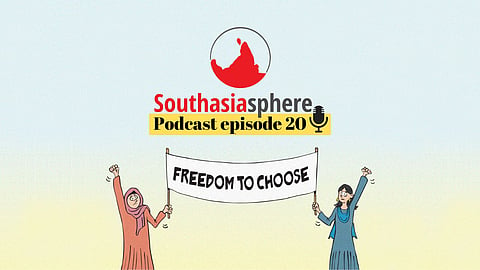The regional impact of Iran’s protests, Myanmar-Bangladesh border tensions, ‘Life Cycle’, and more.
Southasiasphere is our monthly roundup of news events and analysis of regional affairs. If you are a member, you will automatically receive links to the new episodes in your inbox. If you are not yet a member, you can still get it for free by signing up here.
In this episode, we talk about the protests in Iran since the death of Mahsa Amini, who had been detained by the country's so-called morality police for violating mandatory hijab rules and how the restrictions on women's attire are being discussed around the region. We also look at how a progressive piece of legislation regarding the rights of transgender communities in Pakistan, the 2018 Transgender Persons (Protection of Rights) Act, is being attacked by the country's religious right.
In Around Southasia in 5 minutes, we unpack Nepal's constitutional crisis over the controversial citizenship legislation, escalating tensions along the Myanmar-Bangladesh border, income tax raids on think tanks and charity organisations including the Centre for Policy Research, Oxfam India and the Independent And Public-Spirited Media Foundation (IPSMF) across India, and more.

